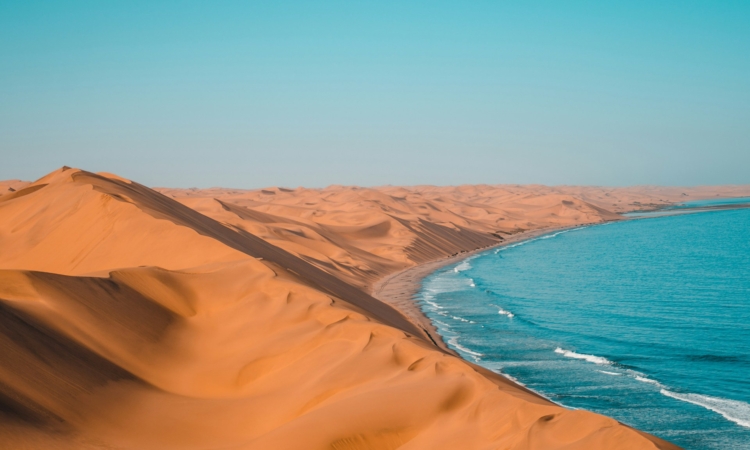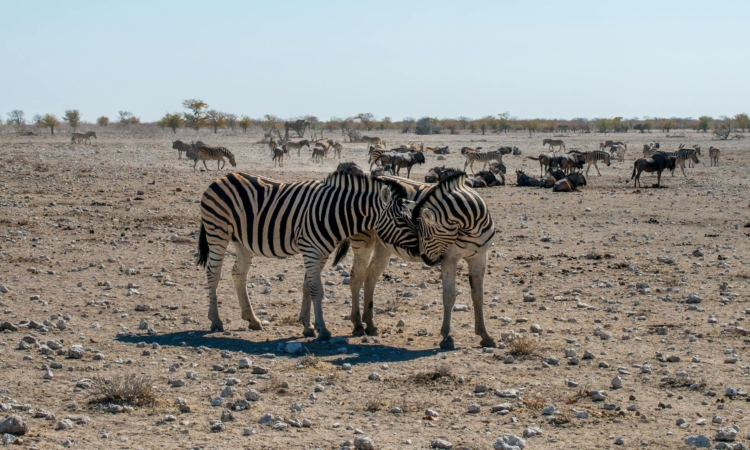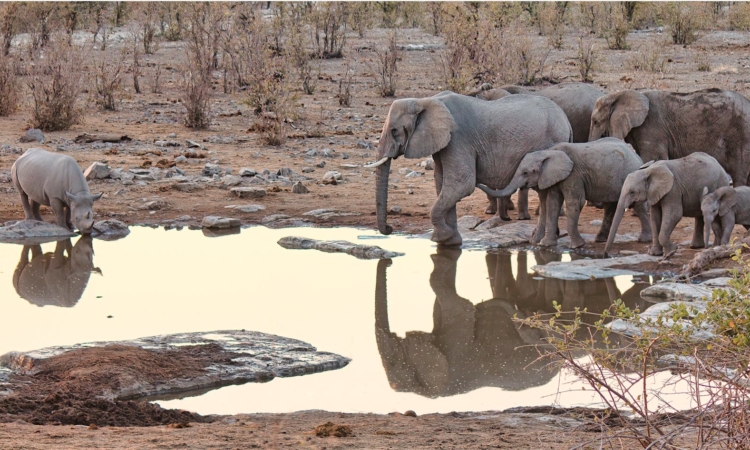With a total length of 2,200 km, the Orange River—also known as the Gariep, Groote, and Senqu, is the longest river in Southern Africa. In 1779, Robert Jacob Gordon, a Dutch VOC officer, gave the river the name “The Orange” in honor of William V and the Dutch Royal House of Orange.
The Flow
The river starts in the Maluti/Drakensberg Mountains of Lesotho, at a height of 3,000 meters above sea level. Here, it is called the Senqu River, and because of the high altitude, it often freezes in winter. From the mountains, the river flows westward through South Africa.
Two major dams on the river are the Gariep Dam, the largest dam in South Africa, and the Vanderkloof Dam, 130 kilometers downstream. The river flows southwest of Kimberley after leaving the Vanderkloof Dam, where it joins the Vaal River near Douglas.
From there, it flows northwest through the southern Kalahari and drops into the Augrabies Falls, 100 kilometers from Upington. It reaches the Atlantic Ocean at Alexander Bay (South Africa) and Oranjemund (Namibia), after passing through the Karas Region and towns like Noordoewer and Vioolsdrif.
The Weather
The western part of the Orange River gets less than 25 mm of rain each year. The climate is very dry, with summer temperatures often reaching 38 to 40°C. In winter, daytime temperatures are between 22 and 25°C, and nighttime temperatures drop to between 5 and 12°C.
The Economic Situation
Water is very important for any economy. The catchment area of the Orange River covers 973,000 square kilometers—about 81% of South Africa’s total land. This makes it a major water source.
The Lesotho Highlands Water Project was designed to add water to the Vaal River system. During dry times, water from the Katse Dam is sent through tunnels to the Vaal Dam to supply cities in Gauteng and the North West Province.
The Gariep Dam was built in 1960 as part of the Orange River Project. It stores 5,340,000 megaliters of water (one megaliter equals one million liters). Water is also sent to the Fish River area in the Eastern Cape.
The Vanderkloof Dam, 130 kilometers downstream, is the main water source for the lower Orange River. It also produces hydroelectric power and was the first power station in South Africa built completely underground.
After leaving the Vanderkloof Dam, the river passes through large dry areas. The water from the dams helps farming areas near Upington, Noordoewer/Vioolsdrif (where most paddling trips start), and Aussenkehr (where many kayaking trips end).
Diamonds were carried from kimberlite pipes into the river by weathering. Over 90 million years, they moved downstream to the ocean. In 1867, the first alluvial diamond was found near Hopetown.
Small-scale mining still takes place along the river. Big commercial diamond mines are found in Oranjemund and Alexander Bay. Since diamonds have been carried out by ocean waves and currents, mining also happens north and south of the river mouth.
Tourism is another important activity. Augrabies Falls is inside a national park and is worth a visit. Some parts of the dams allow boating, and many lodges are along the river.
Canoeing and river rafting are the most popular tourist activities. The Richtersveld wilderness area, known for its beauty, begins at Noordoewer/Vioolsdrif and ends at Sendelingsdrif.
The Animals
Although the Cape leopard still lives in the Richtersveld mountains, there are not many large mammals along the river. Some cheetahs have been seen in recent years. But many smaller animals, birds, reptiles, and insects can be seen.
These include Smith’s red rock rabbit, steenbok, vervet monkeys, chacma baboons, Cape clawless otters, slit-faced bats, and black-backed jackals. On summer nights, you may hear barking geckos or see a Cape monitor (likkewaan) diving into the water.
A type of fast-moving arachnid called the red Roman, or “haarskeerder,” can run up to 16 km/h. It is related to spiders and scorpions. Fish species like mudfish, catfish, and yellowfish are common in the river.
The Plants
The Richtersveld has many kinds of plants, especially succulents. Many are found only in small areas like a hillside or canyon. Important trees include the quiver tree (Aloe dichotoma), shepherd’s tree (Boscia albitrunca), elephant’s trunk or halfmens (Pachypodium namaquanum), wild tamarisk (Tamarix usneoides), buffalo thorn (Ziziphus mucronata), Namaqua rock fig (Ficus cordata), and white karee (Searsia pendulina).
Rafting & Canoeing
Canoeing and rafting on the Orange River are popular all year round. Each season gives a different experience. Trips of different lengths are available for visitors from South Africa, Namibia, and other countries.
Most trips start in the Noordoewer area, as the Richtersveld section is easy to access.
River trips are not just about paddling. They are also about enjoying the natural surroundings, peaceful moments, wildlife, and the friendships made along the way.
It’s about getting away from busy life and enjoying nature.




